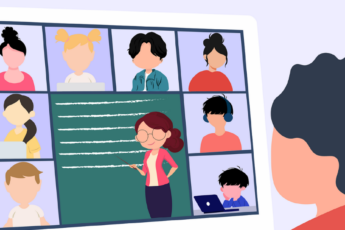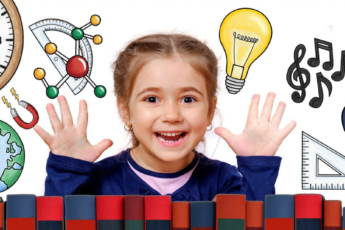How To Help Children Retain Learning
Memory plays a key role in building a solid foundation for learning, both inside and outside the classroom. Retaining what they are taught helps children excel academically, score well on tests, and stay cognitively engaged throughout their lives. However, remembering everything we have learnt is not an ingrained skill, and it is something ECCE educators and Anganwadi workers need to develop with certain teaching strategies.
Why does the brain find it hard to remember?
How The Brain Is Wired To Forget
How Memory Works
Think of your mind like a spiderweb, with multiple connected neurons.

Each time we learn something new, like when a child is introduced to a sock puppet for the first time, the brain turns this experience into a memory. The same neurons involved in making a memory are the ones involved in forgetting it. Once we understand this process, we can devise simple strategies to help us retain important pieces of knowledge. Each time we revisit a particular memory, our synapses are strengthened. Think of it as painting. Apply one coat of paint, and the colour is light. Another coat of paint makes it darker, and stays longer too. This phenomenon is called synaptic plasticity and explains why some memories stay for a lifetime while some fade away.
Different memories are created differently. For someone literate in English, the word ORANGE is more memorable that SMAPTFIN. That is because our brains connected oranges to the smell of the fruit, the colour, and perhaps some distant childhood memory. That means the more connection you have to an experience, and thus your neurons, the stronger is the memory you make.
The Research Into Memory And Forgetting
Rote memorisation leads to a superficial grasp of learning and is quickly forgotten.
This is something psychologist Hermann Ebbinghaus discovered in the 1880s. His studies showed that without reinforcement or connections to prior knowledge, information is quickly forgotten. He called this the forgetting curve, which was a measurement of how much we forget over time.
We lose roughly 56% of information in one hour, 66% after a day, and 75% after six days.
An article by neurobiologists Blake Richards and Paul Frankland counters Ebbinghaus’s theory. They purport that the goal of memory is to evaluate the purpose of each strand of memory, evaluating and potentially discarding information if it doesn’t promote our survival.
A scientific way to retain learning, then, is to increase children’s connections to as many things as possible. So, we are effectively widening the spiderweb in their minds. The following are the most effective learning strategies:
5 Teacher Strategies To Help Children Retain Learning
*can be repurposed for learning with parents too
- Regularly revisit learning: According to research (Carpenter et al., 2012; Kang, 2016), children perform better academically when they are given multiple opportunities to review learned material. Instead of moving on from a topic once your teaching is complete, recap the topic after periodic intervals. Another smart way to reinforce learning is to connect old topics with new ones. For example, the way Square Panda’s sequenced curriculum revisits key topics while adding layers of complexity to make sure learners are revising while learning.
- Break information down into bite-sized pieces: The shorter attention spans of your little learners means you have to space out the information you share with them. Teach them in small increments throughout the day, weaving learning with interactive games and active play. This way, children process the information much faster without having to sit still for longer periods, something that causes the dreaded ‘b’ word: boredom.
- Use multiple modes to deliver information: Use images to support the text you teach. Bring a plant to show colours of leaves, throw a ball to explain motion, collect pebbles to familiarise children with shapes and textures. It is easier to remember information when it is presented in different ways, and particularly so when visual aids are involved. Rather than rely on one mode of instruction, mix it up by adding multiple modes together.
- Use rhymes and songs: Human brains are wired to remember music, patterns, and sounds, and so, using music to teach can help increase recall in children. Create little songs and rhymes about the topic you are teaching, and encourage your students to do the same. For example, if you are talking about frogs, you can bring in an element of maths too by singing Five Little Speckled Frogs.
- Make learning fun: Using entertainment and games in learning has always been encouraged by early childhood education experts. Such instruction makes use of the child’s interest to teach them new concepts. Theoretical subjects are easier to follow, their creativity blooms, and they are actively engaged in learning. Educators and caregivers can take the aid of child-safe educational apps, finger puppets, musical instruments, stories, and more as they teach.
Even as we learn that children start to forget almost as soon as learning happens, there are certain evidence-based strategies to help reinforce learning and increase memory.
Share this article!




Leave a Comment